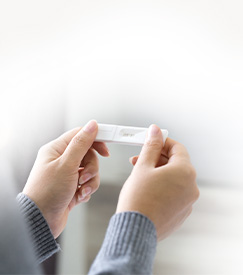 Attachment refers to the process of forming physical, psychological and emotional bonds between child and parent. For an infant, attachment begins in utero, as the fetus relies on the placenta for nourishment. Attachment for the mother begins after birth. Physical touch and comfort build the attachment between a baby and mother. Emotional and physical attachment between child and parent is required for a child to feel secure and have healthy relationships into adulthood.
Attachment refers to the process of forming physical, psychological and emotional bonds between child and parent. For an infant, attachment begins in utero, as the fetus relies on the placenta for nourishment. Attachment for the mother begins after birth. Physical touch and comfort build the attachment between a baby and mother. Emotional and physical attachment between child and parent is required for a child to feel secure and have healthy relationships into adulthood.
With domestic adoption, however, bonding and attachment doesn’t come as easily. For children adopted past infancy, their bond to their birth parents has been broken, and rebuilding this bond with their new adoptive parents can take time. This bond can be re-built with physical and emotional care courtesy of the adoptive parents. Unfortunately, adoptive children are at an increased risk of reactive attachment disorder, due to neglect or abuse from their past parent-child relationship or frequent change in caregivers. Thankfully, attachment can be taught and learned.
Activities and Attachment Parenting Techniques to Help Children and Adoptive Parents Bond
Psychological therapy coupled with specific parenting exercises is a great defense against attachment and bonding issues between adoptive parents and child. The adoptive parents should focus on the three therapeutic keys to helping their child develop new patterns of emotional attachment: security, stability, and sensitivity.
Extreme patience is absolutely necessary to give the child space to develop a capacity for healthy emotional attachment. The adoptive parent should set boundaries in a loving and empathetic manner, as well as create an everyday routine to give the child a sense of stability. The child should get into a routine of waking up at the same time every day, eating healthy, balanced meals, learning self-help skills and proper manners, and attending school. This helps the child regain trust.
Sensitivity is a must, even when the child acts out. Remember, they are re-learning everything they know about bonding with a parent or caregiver, and their acting out stems from hurt or past abuse. It will take time. Play therapy is also a great way to build the bond between adoptive parent and child through playtime.
Bonding with an Older Child
Generally, the older your child is at the time of adoption, the more difficult it is to form a physical and emotional bond with them. It’s important to let your child know you’re not going to hurt them or fight with them, and that your home is a secure place. They come from a broken background of neglect and possibly abuse, and they need to understand it’s safe to trust you and that you chose them, love them unconditionally, and have their best interests at heart. Learning what triggers your child into fight or flight response and avoiding setting off those triggers when possible is crucial. Instead of punishing the child when they act out, walk them through their behavior in a nurturing way that helps pave the way for new behavioral patterns. It will require a lot of patience on your part. When children act out, it almost always stems from stress and fear.
Building an attachment between adoptive parent and child can be stressful and frustrating for both parties. But if you seek psychological therapy, give your child a routine, and work with them through their behavioral issues, a physical and emotional bond will form over time.






